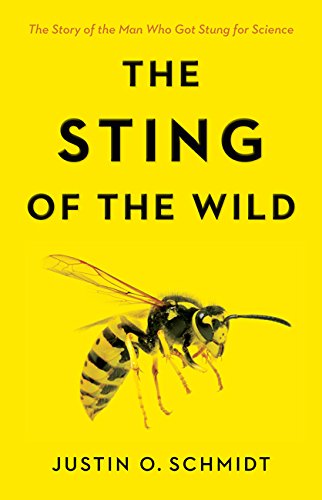

Most ebook files are in PDF format, so you can easily read them using various software such as Foxit Reader or directly on the Google Chrome browser.
Some ebook files are released by publishers in other formats such as .awz, .mobi, .epub, .fb2, etc. You may need to install specific software to read these formats on mobile/PC, such as Calibre.
Please read the tutorial at this link: https://ebookbell.com/faq
We offer FREE conversion to the popular formats you request; however, this may take some time. Therefore, right after payment, please email us, and we will try to provide the service as quickly as possible.
For some exceptional file formats or broken links (if any), please refrain from opening any disputes. Instead, email us first, and we will try to assist within a maximum of 6 hours.
EbookBell Team

5.0
30 reviewsEntomologist Justin O. Schmidt is on a mission. Some say it’s a brave exploration, others shake their heads in disbelief. His goal? To compare the impacts of stinging insects on humans, mainly using himself as the gauge.
In The Sting of the Wild, the colorful Dr. Schmidt takes us on a journey inside the lives of stinging insects, seeing the world through their eyes as well as his own. He explains how and why they attack and reveals the powerful punch they can deliver with a small venom gland and a "sting," the name for the apparatus that delivers the venom. We learn which insects are the worst to encounter and why some are barely worth considering.
The Sting of the Wild includes the complete Schmidt Sting Pain Index, published here for the first time. In addition to a numerical ranking of the agony of each of the eighty-three stings he’s sampled so far (from below 1 to an excruciatingly painful 4), Schmidt describes them in prose worthy of a professional wine critic: "Looks deceive. Rich and full-bodied in appearance, but flavorless" and "Pure, intense, brilliant pain. Like walking over flaming charcoal with a three-inch nail embedded in your heel."
Schmidt explains that, for some insects, stinging is used for hunting: small wasps, for example, can paralyze huge caterpillars and then lay their eggs inside so that their larvae can feast within. Others are used to kill competing insects, even members of their own species. Humans usually experience stings as defensive maneuvers used by insects to protect their nest mates.
With colorful descriptions of each venom’s sensation and a story that leaves you tingling with awe, The Sting of the Wild’s one-of-a-kind style will fire your imagination.